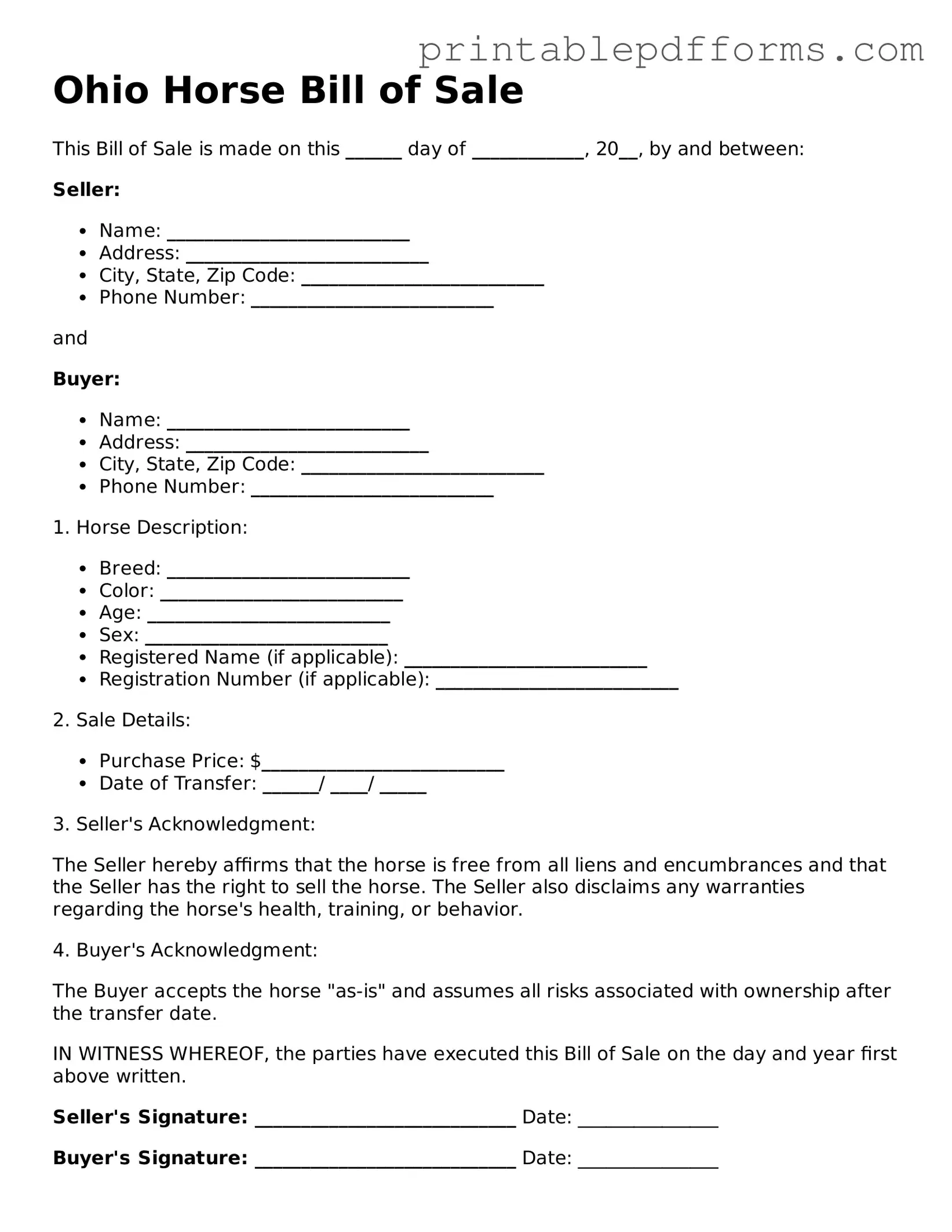The Ohio Horse Bill of Sale form is a legal document that serves as proof of the sale and transfer of ownership of a horse. This form outlines the details of the transaction, including the identities of the buyer and seller, the description of the horse, and the sale price. It is important for both parties to have this document to protect their rights and clarify the terms of the sale.
Why is a Bill of Sale important?
A Bill of Sale is crucial for several reasons:
-
It provides legal proof of ownership transfer.
-
It documents the terms of the sale, helping to prevent disputes.
-
It may be required for registration or insurance purposes.
The form typically includes the following details:
-
Name and contact information of the seller.
-
Name and contact information of the buyer.
-
Description of the horse, including breed, age, color, and any identifying marks.
-
Sale price and payment terms.
-
Date of the sale.
-
Signatures of both parties.
While it is not mandated by Ohio law to use a Bill of Sale for horse transactions, it is highly recommended. This document provides essential protection for both the buyer and seller, ensuring that the terms of the sale are clear and legally binding.
Can I create my own Bill of Sale?
Yes, you can create your own Bill of Sale, as long as it contains all the necessary information. However, using a standard form can help ensure that you do not overlook any important details. Many templates are available online, or you may consult with a legal professional to create a customized document.
What should I do if I lose the Bill of Sale?
If you lose the Bill of Sale, it is advisable to contact the other party involved in the transaction. Both the buyer and seller can create a duplicate Bill of Sale, signed by both parties to reaffirm the transaction. Keeping multiple copies in a safe place is a good practice to avoid this situation.
Can a Bill of Sale be used for other types of animals?
Yes, a Bill of Sale can be used for various types of animals, not just horses. The same principles apply; it should document the sale and transfer of ownership for any animal, including livestock, pets, or exotic animals. Ensure that the form is tailored to reflect the specifics of the animal being sold.
What if there are issues after the sale?
If issues arise after the sale, such as health problems or misrepresentation of the horse's condition, the Bill of Sale can serve as a reference point. It is important to review the terms outlined in the document. In some cases, mediation or legal action may be necessary, depending on the situation and the agreements made during the sale.
The Ohio Horse Bill of Sale form can be found through various online resources, including state government websites and legal document providers. Additionally, local equestrian organizations or veterinary clinics may offer templates or guidance on how to properly complete the form.
